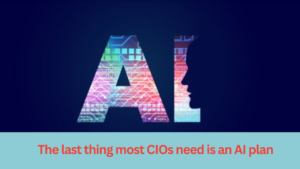
In the quick moving domain of innovation, the past frequently holds significant examples for the present and future. With regards to man-made reasoning (simulated intelligence), understanding authentic points of reference can direct us toward additional powerful techniques. We should take an excursion through history to reveal bits of knowledge that can shape computer based intelligence procedures for the present Boss Data Officials (CIOs).
Considering the presentation of PCs (laptops) into the undertaking, we recollect that it wasn’t IT divisions yet rather business clients who led their reception. Essentially, the ascent of the web surprised numerous IT shops, prompting botched open doors until showcasing divisions and fans assumed control.
Presently, as artificial intelligence changes businesses with its growing capacities, specialists underline the significance of careful preparation. In any case, a more critical glance at history recommends in any case.
Dr. Yeahbut, our imaginary doubter, challenges the tried and true way of thinking with a basic eye. He questions the possibility of characterizing exact issues for simulated intelligence to settle, supporting rather for a more extensive way to deal with launch simulated intelligence drives. Beginning little and emphasizing, he contends, is vital to progress.
While computer based intelligence vows to upgrade decision-production with information driven bits of knowledge, Dr. Yeahbut urges suspicion until artificial intelligence can give straightforward thinking to its decisions. He advocate the expansion of human endeavors with computer based intelligence as opposed to consigning people to serve the innovation.
Withdrawing from the possibility of departmental computer based intelligence plans, Dr. Yeahbut proposes a cross-utilitarian computer based intelligence mind trust to cultivate cooperation and development. He focuses on the significance of zeroing in on viability over efficiency and cautions against focusing on return for money invested, upholding for a learning-focused way to deal with artificial intelligence execution.
In tending to worries about security and morals in computer based intelligence, Dr. Yeahbut advises us that moral contemplations rise above mechanical devices and ought to direct our goals and activities.
While Dr. Yeahbut’s studies might appear to be unforgiving, they highlight a basic truth: the man-made intelligence scene is as yet developing, and there are no specialists yet. As CIOs explore this unknown domain, they should draw on verifiable bits of knowledge and embrace an adaptable, iterative way to deal with man-made intelligence system.
All in all, as opposed to sticking unbendingly to predefined artificial intelligence plans, CIOs ought to embrace trial and error, coordinated effort, and a pledge to moral development. By gaining from history and adjusting to the developing artificial intelligence scene, they can diagram a course toward outcome in the computerized age.
